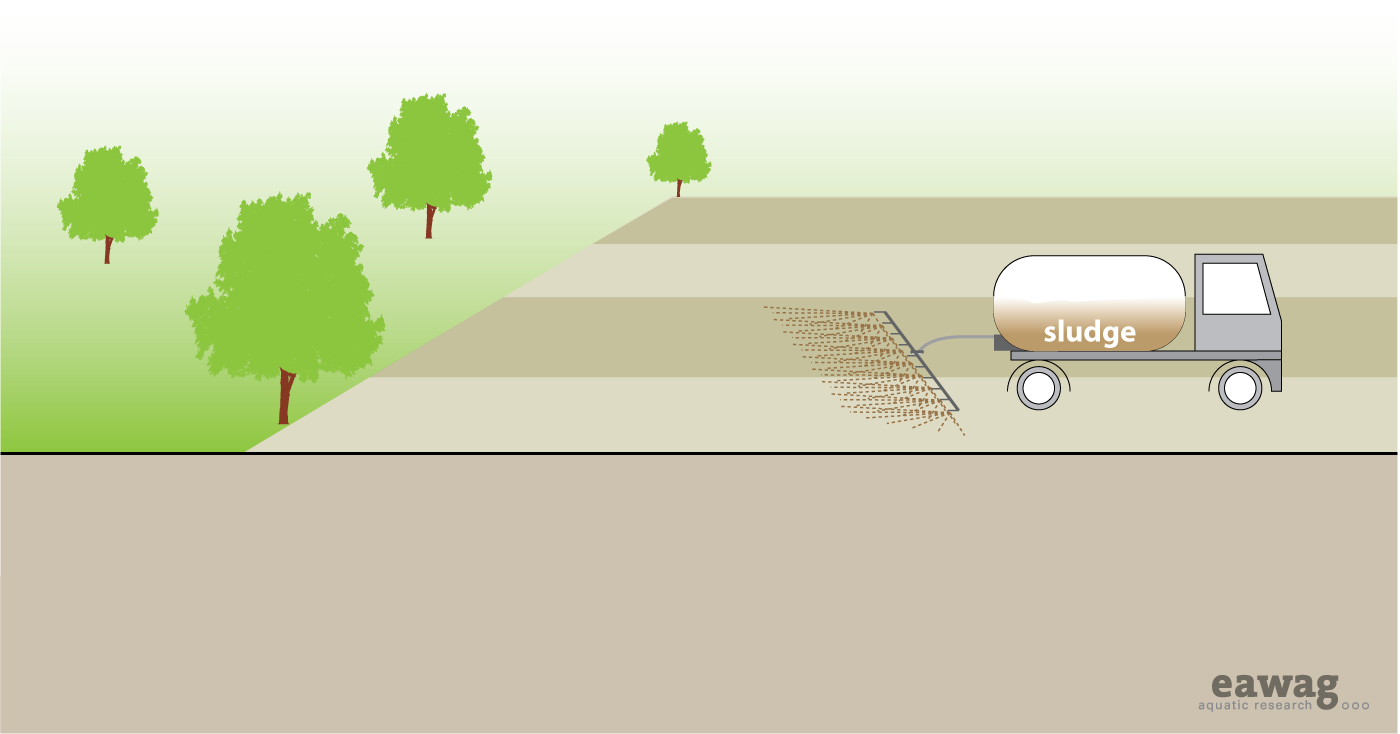Application of Sludge
|

|
|
| |||||||||||||||||||||||||||||||
Digested or stabilized Faecal Sludge is refered to as ‘Biosolids’. Depending on the quality of the biosolids, they can be applied to public or private lands, for landscaping or for agriculture.
The USEPA defines different levels of biosolids depending on the treatment and quality, and therefore the health risk. Class A biosolids (i.e. biosolids that can be sold for public use) can be used with nearly no restrictions.
Please consult the guidelines for specific use criteria. Biosolids can be used in agriculture, home gardening, forestry, sod and turf growing, landscaping, parks, golf courses, mine reclamation, dump cover, or erosion control. Although biosolids have lower nutrient levels than commercial fertilizers (for nitrogen, phosphorus and potassium respectively), they can be used to replace part or all of commercial fertilizers that are used.
Additionally, biosolids have been found to have properties that are superior to those of fertilizers, such as bulking properties, water retention properties and the slow, steady release of nutrients.
Biosolids are spread on the ground surface using conventional manure spreaders, tank trucks or specially designed vehicles. More liquid biosolids (e.g. from anaerobic reactors) can be sprayed onto, or injected into, the ground. Dewatered biosolids may be ‘flung’, which is most common in forests.
| Advantages | Disadvantages/limitations |
|---|---|
| - Can accelerate reforestation. - Can reduce use of chemical fertilizers and improve water retention of soils. - Can reduce erosion. - Low cost. |
- May pose public health risk, depending on the quality and application. - Odours are normally noticeable (depending on prior treatment). - May require special spreading equipment. - Micropollutants may accumulate in the soil and contaminate groundwater. |
Adequacy
Although biosolids are sometimes criticized for containing potentially high levels of metals or contaminants, commercial fertilizers are also contaminated to varying degrees, most likely with cadmium or other heavy metals. Faecal sludge from pit latrines has no, if any, chemical inputs and is therefore not a high risk source of contamination. Faecal sludge that originates at large-scale wastewater treatment plants is more likely to be contaminated since it receives industrial and domestic chemicals, as well as surface water run-off which may contain hydrocarbons and metals. Depending on the sludge source, biosolids can serve as a valuable and often much-needed source of nutrients. Land application of biosolids may be less expensive than disposal.
Application rates and usages for biosolids should take into account not only the presence of pathogens and contaminants, but also the quantity of nutrients such that they are spread at a sustainable and ‘agronomic’ rate. Appropriate safety and application regulations should be followed.
Health Aspects/Acceptance
The greatest barrier to biosolid use is generally acceptance. However, even when biosolids are not accepted in agriculture or by local industries, they can still be useful for municipal projects and can actually provide significant savings to public projects (e.g. mine reclamation). Depending on the source of the faecal sludge and on the treatment method, biosolids can be treated to a level where they are generally safe and without significant odour or vector problems.
Maintenance
Spreading equipment must be maintained to ensure continued use. The amount and rate of biosolid application should be monitored to prevent overloading and thus, the potential for nutrient pollution.
Acknowledgements
The material on this page was adapted from:
Elizabeth Tilley, Lukas Ulrich, Christoph Lüthi, Philippe Reymond and Christian Zurbrügg (2014). Compendium of Sanitation Systems and Technologies, published by Sandec, the Department of Water and Sanitation in Developing Countries of Eawag, the Swiss Federal Institute of Aquatic Science and Technology, Dübendorf, Switzerland.
The 2nd edition publication is available in English. French and Spanish are yet to come.
References and external links
- U.S. EPA (1999). Biosolids Generation, Use, and Disposal in the United States, EPA-530/R-99-009. U.S. Environmental Protection Agency: Washington, D.C. Available: http://www.epa.gov
- U.S. EPA (1994). A Plain English Guide to the EPA Part 503 Biosolids Rule, EPA832-R-93-003. U.S. Environmental Protection Agency: Washington, D.C. Available: http://www.epa.gov

